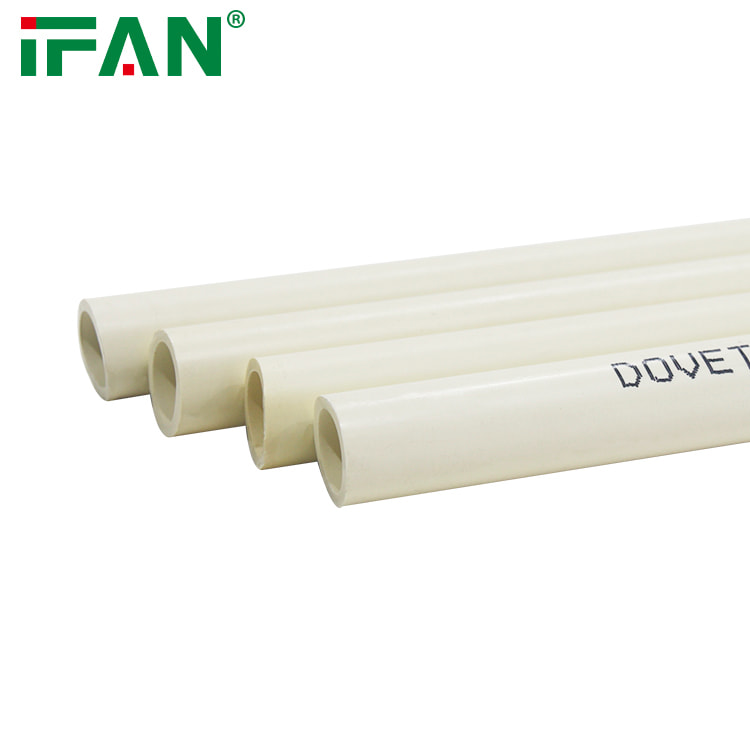Introduction:
PVC pipes are commonly used in various applications, including municipal water supply, industrial drainage, and irrigation. While PVC pipes have long-term chloride ion precipitation issues, they are cost-effective, rigid, and have high hardness, making them suitable for different scenarios. This article discusses the construction, maintenance, and installation of PVC pipes.

Construction and Maintenance of PVC Pipe:
Connection Methods: PVC pipes can be connected using methods such as rubber ring seals, bonding, and flange connections. Rubber ring connections are typically used for pipes with a diameter greater than 100mm. Smaller pipes usually utilize bonded joints or coupling joints. Flange connections are employed when crossing sewers or other pipes, and valves are also connected using flanges.
Specific Methods:
For small-caliber pipes bonded with solvent, grooves should be formed around the socket’s small circumference to ensure a secure joint and prevent leaks.
Pipes with a diameter greater than 100mm commonly use rubber ring joints. Before installation, chamfering the insertion part and checking the rubber ring’s quality is essential.
When excavating trenches for pipeline installation, ensure the pipe fits into the trench and seals properly. If the existing soil is not loose, there’s no need for a pressure-impacting cushion layer.
Special Considerations:
PVC branch pipes can be separated using T or vertical water warfare. Installing a saddle-shaped pipe fitting and a half T-shaped pipe fitting, secured with U-shaped bolts, strengthens the pipe wall. Additionally, thrust docks need to be installed in locations where water flow generates thrust, such as elbows, T-shaped junctions, and blocked pipe ends.
Detection Methods:
Traditional metal pipe inspection equipment cannot detect PVC pipes. Embedding a wire on the pipe during burial solves this issue easily.
Installation Structure of PVC Pipe:
Pipe Support:
To ensure clean PVC pipelines and prevent damage, using supports is advisable. Timely cleaning of the pipes can effectively prevent mud residue.
Pre-Installation Checks:
Before installing PVC pipes, inspect the construction pipeline layout. It should not only be neat but also structurally sound and smooth.
Handling Precautions:
During installation, handle the pipes with care to prevent damage during transportation. Check for any stone or soil residue inside the pipes.
Pressure
Conclusion: In conclusion, PVC pipes find extensive use in construction, catering to both water supply and drainage needs. Despite potential issues like long-term chloride ion precipitation, PVC pipes are suitable for various applications due to their low cost, high hardness, and resilience to temperature changes. When constructing and maintaining PVC pipes, choosing the appropriate connection method, considering specific construction details, and following proper procedures are crucial. Installation considerations include cleanliness, structural integrity, careful handling, and pressure testing. By comprehensively considering the characteristics of PVC pipes and adhering to correct construction and maintenance procedures, stable and safe operation can be ensured.
Contact: IFAN is a manufacturer with 30 years of experience, specializing in plastic pipes, fittings, and valves in China. For inquiries about IFAN’s PVC, valves, pipes, and fittings, feel free to contact us. Explore our diverse range of high-quality and cost-effective plastic pipe and fitting products tailored to your specific needs.
Testing:
After completing the PVC pipe installation, perform a pressure test for a certain duration. Check all interfaces for leaks during the pressure test. If leaks are found, replace the affected components immediately.
Conclusion:
In conclusion, PVC pipes find extensive use in construction, catering to both water supply and drainage needs. Despite potential issues like long-term chloride ion precipitation, PVC pipes are suitable for various applications due to their low cost, high hardness, and resilience to temperature changes. When constructing and maintaining PVC pipes, choosing the appropriate connection method, considering specific construction details, and following proper procedures are crucial. Installation considerations include cleanliness, structural integrity, careful handling, and pressure testing. By comprehensively considering the characteristics of PVC pipes and adhering to correct construction and maintenance procedures, stable and safe operation can be ensured.
Contact:
IFAN is a manufacturer with 30 years of experience, specializing in plastic pipes, fittings, and valves in China. For inquiries about IFAN’s PVC, valves, pipes, and fittings, feel free to contact us. Explore our diverse range of high-quality and cost-effective plastic pipe and fitting products tailored to your specific needs.
We will reply your email or fax within 24 hours.
You can call us at any time if there is any question on our production.
For more information,pls visit our webside https://www.ifanplus.com/
Pls Mailto: [email protected]






